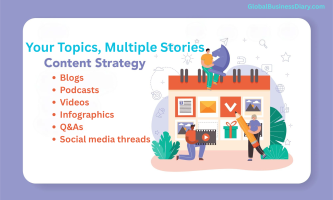Market Segmentation: Definition, Types, Benefits, And More

Marketing is only successful for a company when the company markets to the right people in the right way at the right time. This is where market segmentation comes into play. It helps businesses tailor their sales campaigns and marketing plans to target niche customers while making the promotion engaging and the product appealing. Businesses do market segmentation to narrow down their target market.
In this article, you will learn about market segmentation and how it works for businesses. Next, you will also learn about the major types of market segmentation that marketers use for promoting products and services. Finally, we will also look at some of the major benefits and limitations of market segmentation. Hence, to learn more about this marketing strategy, read on through to the end of the article.
What Is Market Segmentation?

According to Investopedia,
“Market segmentation is a marketing term that refers to aggregating prospective buyers into groups or segments with common needs and who respond similarly to a marketing action. Market segmentation enables companies to target different categories of consumers who perceive the full value of certain products and services differently from one another.”
Here, the marketers of a company first find out the target market and then divide the market into small groups and subgroups. In this case, consumers in the small market segments share similar interests, needs, and characteristics. As a marketer, if you target a small group of a large market, you will be able to connect with consumers who are more likely to pay for products that appeal to them directly.
Basically, if you use market segmentation, it will be easier to manage a large audience and segment them to create a personalized and targeted market experience. With market segmentation, as a marketer, you will be able to focus more on your marketing efforts towards your individual customer segments. This will help you to cater to the specific desires and needs of your target customers.
Read More: What Is Continuity In Business, And Why Is It Important?
How Does Market Segmentation Work?
According to G2.com,
“Market segmentation aims to introduce a tailored message that will be received successfully. This is advantageous for companies with a product or service in the marketplace that boasts multiple benefits or uses for different types of customers. Accept the fact that you can’t be everything to everybody, and as a marketer, you can’t solve everyone’s problem or appeal to every single person.”
Hence, market segmentation is a useful and effective growth strategy that marketers implement to reach strongly with their offerings to the target audience. To identify different market segments within a market, companies use three criteria –
- The segment’s common needs (Homogeneity)
- The uniqueness of the group from others (Distinction)
- A similar response to the market (Reaction)
Let’s take an example of an apparel store having different market segments for football players and basketball players. Being part of different groups, football players and basketball players respond to different advertisements. If the apparel company understands the uniqueness of these two different market segments, branding will be easier for them.
What Are The Types Of Market Segmentation?

The following are some of the major types of market segmentation that marketers implement to find out their niche market:
1. Demographic Segmentation
Here, companies break the market segment into common demographics based on gender, age, income, race, education, occupation, and more factors. With this segmentation, companies assume that individuals belonging to similar demographics have similar needs. This is one of the most common methods of market segmentation.
2. Geographic Segmentation
Here, the marketers segment a particular population based on factors like physical location. In this case, they assume that people living within a given geographical area have similar needs. It is a great strategy that larger companies use if they want to open new branches in a new place or want to expand their operations.
3. Psychographic Segmentation
Here, the company tries to segment a population based on personality, lifestyle, opinions, and interests. This makes it one of the most difficult market segmentation approaches. This is because these are difficult to achieve since objective data are not available on these traits, and these traits change easily. However, if done properly, these provide the strongest results.
4. Behavioral Segmentation
In this case, marketers depend a lot on consumer actions, market data, and the consumers’ decision-making patterns. Here, the grouping of the consumers is done based on how they have previously interacted with markets and products. The previous spending habits of the consumers show what they actually want.
What Are The Benefits Of Market Segmentation?
According to Shopify.com,
“It’s easier to reach, target, and engage customers with a niche business that specifically appeals to a segment of the market. Use this strategy to identify the most profitable segments for your business. Remember, market segmentation isn’t a one-off activity, as consumer preferences change and new competitors emerge.”
The following are the major benefits of market segmentation:
- Better resource efficiency
- The brand image gets stronger
- It creates a higher potential for brand loyalty
- Targeted advertising is better
- Market differentiation is more effective
What Are The Limitations Of Market Segmentation?
The following are a few limitations of market segmentation that you need to be aware of:
- The upfront marketing expenses are higher, as companies spend a lot on gaining data.
- Since a large market is under consideration, the product-line complexity increases as a result.
- Misassumptions are common, and this creates a lot of risk for marketers.
- The process of market segmentation can only be done if the data is reliable. Hence, it depends a lot on the source of data.
Read More: Business Continuity Plan – What Is It, And How Does It Work?
Wrapping Up
With the help of market segmentation, marketers try to identify targeted groups of consumers so as to tailor their own products and services to make them attractive to the customer group. The segmentation is done in four main ways – demographically, geographically, psychographically, and behaviorally.
With the help of market segmentation, companies can minimize their risks by finding out which products are the ones that are most likely to earn the attention of the target market. What do you think is the most important benefit of market segmentation? Share your opinions with us in the comments section below.
Read Also:













